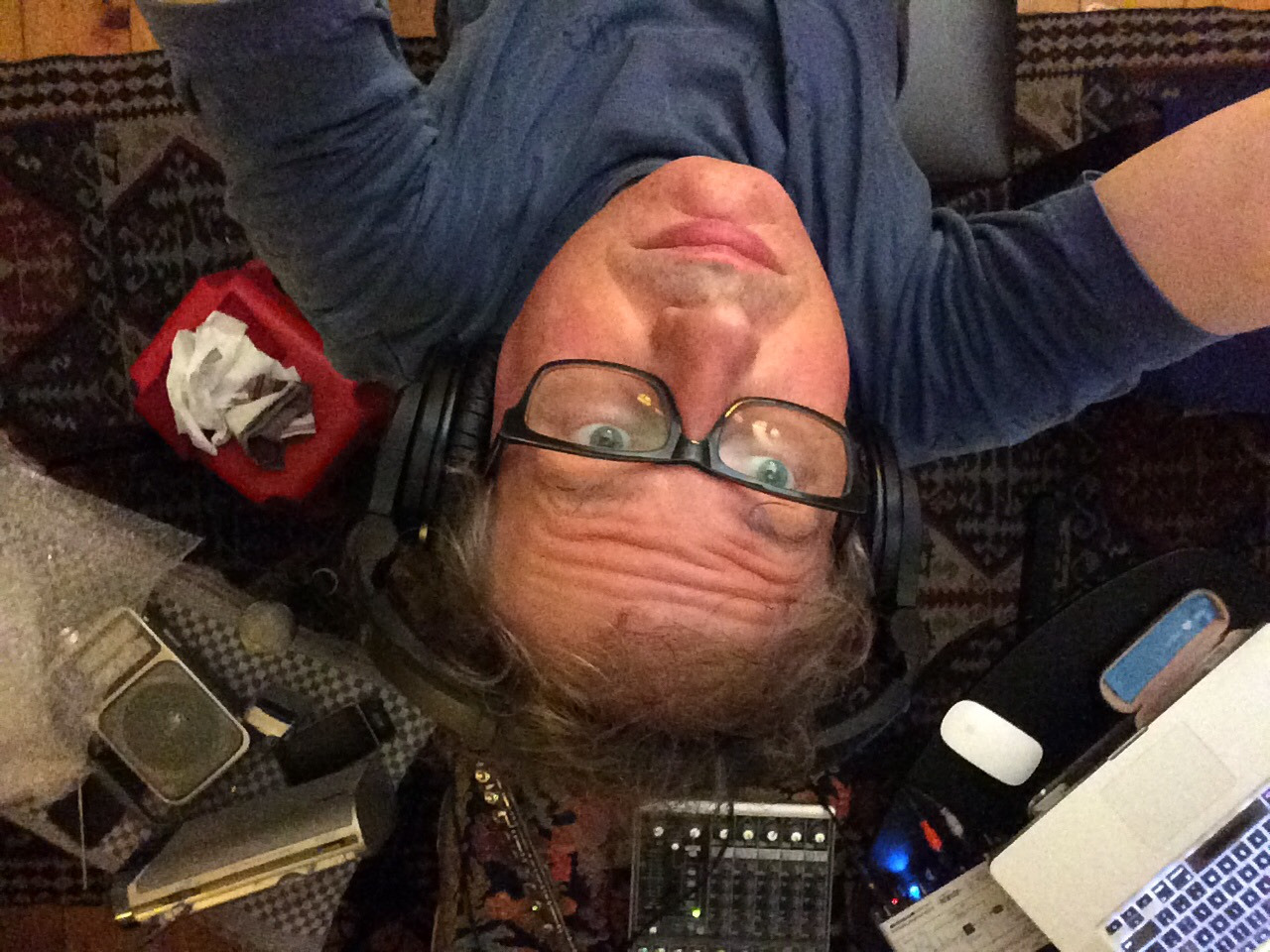We are excited to be working with Sonant Bodies who commissioned five amazing composers to create soundscapes for ten pieces of microlit from the Shuffle anthology. Matilda Gould caught up with the composers to ask them about the pieces they chose to work with and how they approached the task of creating soundscapes. You can hear a panel discussion about the Shuffle/ Sonant Bodies collaboration, facilitated by editor Cassandra Atherton at the Newcastle Writers Festival, April 6.
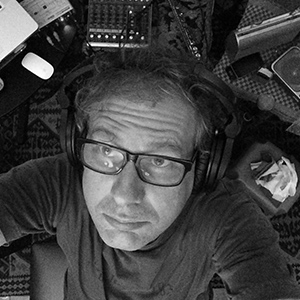 Stephen Adams
Stephen Adams
- What drew you to the two pieces of microlit you chose to compose for?
‘Ice Cube’ – I liked the strong evocation of an unfamiliar, surreal sound-space (hearing the world from inside an ice cube), and the invitation to work with ice and an image of chilly perfection as starting points for creating a soundscape. I also enjoyed the comic-surreal humour of the piece.
‘Jamming’ – I was attracted to the multi-layered relationship to music and sound in the text. The actual sounds of the song and of the footsteps (with the implied sound environment of the walking) – the memory of the song resounding inside the brain after the actual sounds are gone, interacting with the walking and dominating the narrator’s thoughts – and the meta-relationship to sound of writing about the problem of music and of a song’s insistent presence that then enables the body/brain to let go of it.
- What was the key element of the microlit that you were you trying to capture or express in your compositions? Maybe a feeling, a memory, a sense of place? Or something else entirely?
‘Ice Cube’ by Sigley Hood – The surreal, imaginary sound experience and feeling of being inside an ice cube.
‘Jamming’ by Jen Craig – The feeling of a song in our brain coming to dominate our attention, transforming our movements and the sounds of the environment by drawing them into its slipstream to create an overwhelming experience. Also the intense irritation of the song’s insistent hookline, etching itself into the brain with increasingly deranged intensity. Then the gentle openness of the same street sounds once the song is no longer there.
- What was it like to use a stranger’s writing as the inspiration for your composition? Did it make you think differently about your own creative practice, or allow you to appreciate new layers of meaning in the story?
Working with texts has been a big part of my practice as a composer-musician going right back to my teens (or arguably my early childhood!). It started with texts I wrote myself, for band songs, choral works and music-theatre pieces. From the mid-1990s I started working with texts by other people, initially as a way to challenge myself and stretch my music in response to their different imagery, rhythms and structures. I was particularly attracted to the contemporary performance poetry of Australian writers Ania Walwicz, joanne burns and Amanda Stewart, and the dense, poetic prose of my life partner Jen Craig. More recently my day job at the ABC has involved weaving together interview recordings and presentation scripts with music recordings and location sound to create radio and podcast programs about contemporary Australian art music. The Shuffle project gave me the opportunity to apply these production skills to a more playful, fanciful project.
- What was the hardest part of creating the composition? What was the best?
Finding the time (and recording the ice sounds without getting any fridge or other machine sounds in the background!).
The fun of transforming the voices and familiar sounds to create unfamiliar sounds and sound-relationships that both echo and expand the tone and atmosphere of the two pieces.
- What role do you think sound plays in storytelling?
The reading itself – the pacing, stress patterns, and play with lengthening and shifting of phonemes and overall tone – is already a complex world of sound that evokes all kinds of images and emotions, from pleasure and excitement, to fear and uncertainty, sometimes simultaneously.
When we add musical or other textural sounds and effects, we have the opportunity to add another layer of narrative – an emotional and atmospheric counterpoint that can shift between reinforcement and contrast or even contradiction of the emotions and atmosphere of the voice and text, adding to the richness of the experience.
(It can also direct the listener towards a particular interpretation of a story/reading. Towards sentimental identification, for example. Or detached and even unsympathetic observation. It can emphasise the humour in the piece, or the pathos, or draw attention to the larger context of the narrative in the social or physical world around it.)
- If you had to describe each of your compositions in three words or less, what would you say?
‘Ice Cube’ – Chilly beauty (with comic interruption)
‘Jamming’ – A feverish distraction passing
(OK, so I cheated a bit on the three words)
Stephen Adams is a composer, voice and sound artist, and producer. Stephen’s work includes concert scores, sound pieces and improvised performance. His music seeks to explore relationships between diverse sound materials and listening contexts, incorporating field r3cordings and lo-fi electronics alongside voice and acoustic instruments Stephen is also a radio and online producer-presenter with ABC Classic FM, including producing and presenting the regular specialist new musicpodcast program New Waves. Recent projects include several chamber works combining acoustic instruments with field recordings, flute music for Janet McKay, group and solo improvisations working with voice, flute, field recording material and lo-fi sound diffusion, sonic interpretations of the writings of his partner Jen Craig, and the song recital project A Body of Water with soprano Karen Cummings. His work Afterwards for the Sydney Chamber Choir and percussionist Claire Edwardes was runner-up for Choral/Vocal Work of the Year at the 2015 Art Music Awards.
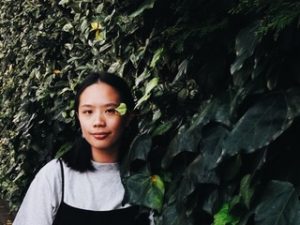
Kezia Yap
- What drew you to the two pieces of microlit you chose to compose for?
As an Australian currently living in Tokyo, I was drawn to the stories that I felt linked me both to Japan, and to Australia – allowing me to draw on sounds that feel familiar to create soundscapes with subtle nods to both these places. I chose ‘Disconcert’ by Jordie Albiston and ‘Dragon’ by Richard Holt.
- What was the key element of the microlit that you were you trying to capture or express in your compositions? Maybe a feeling, a memory, a sense of place? Or something else entirely?
Within ‘Disconcert’, I tried to create an artificial space – as if sitting within someone’s memory, using sound samples of Australian birds I had taken, and manipulating them very slightly.
In ‘Dragon’, I wanted to create a sense of a place – using sounds I hear in everyday life, such as the calls of ravens, and fuurin – glass bells hung outside houses and stores. I wanted to create a juxtaposing soundscape, mimicking constant sounds of everyday life with a supernatural being.
- What was it like to use a stranger’s writing as the inspiration for your composition? Did it make you think differently about your own creative practice, or allow you to appreciate new layers of meaning in the story?
I enjoyed using stories by people I don’t know because it encouraged me to think outside the box and try different processes to create the works. It was also interesting to delve into the way that stories can be told through words, and through sound and experimenting with ways that they can weave together.
- What was the hardest part of creating the composition? What was the best?
The most challenging part of this composition was devising structures that would complement the story, while simultaneously challenging the listener’s expectations.
The best part of creating these compositions was experimenting with sounds and forms that I hadn’t tried before.
- What role do you think sound plays in storytelling?
I think that sound plays an important role in storytelling – it creates an interpretation for the story, and by creating these compositions, I get to share my own interpretation of these two stories. Sound can guide a person to also create their own interpretations of the story, or can influence how the story makes them feel.
- If you had to describe each of your compositions in three words or less, what would you say?
‘Disconcert’: distant, yet dense
‘Dragon’: humid summer memories
Kezia Yap is a Tokyo-based Australian composer who specialises in acoustic chamber and mixed music. She has participated in numerous contemporary music festivals and residencies around the world including Connecticut Summerfest and ATM in Seoul in 2017, and more recently, the Madeira Residency and June in Buffalo in 2018. Her music has been premiered and performed around Australia, as well as around the US, Europe and Asia. Yap has also appeared as a featured composer on the Making Waves new music playlist, in a featured playlist in Liminal Magazine, and been broadcasted on ABC Classic FM, Fine Music 102.5 and 3MBS.
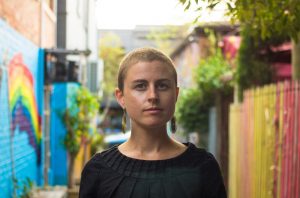 Sarah Monk
Sarah Monk
- What drew you to the two pieces of microlit you chose to compose for?
- I was drawn to these stories as they both elicited familiar emotions and reminded me of personal experiences. I felt a deep connection to ‘Sea Womb’ by Christine Howe as I became a mother on Christmas day 2018. ‘Suspension (Destruction)’ by Cynthia Troup reminded me of my first solo travelling adventures overseas.
- What was the key element of the microlit that you were you trying to capture or express in your compositions? Maybe a feeling, a memory, a sense of place? Or something else entirely?
‘Sea-Womb’ for me, evokes memories of childhood, connection to the past, place, and the cycles of nature, connected deeply with the feminine and motherhood. I wanted to capture the visual of the “shack by the sea” and how this place, its unique sounds, rhythms colours and textures formed a womb for many generations to live. I wanted to express this kind of nostalgia.‘Suspension (Destruction)’ seems to really capture the atmosphere and feelings of both estrangement and fascination when visiting a foreign country. I wanted to capture the drama of chaos and silence as created already by the writer/narrator. - What was it like to use a stranger’s writing as the inspiration for your composition? Did it make you think differently about your own creative practise, or allow you to appreciate new layers of meaning in the story?
Using a stranger’s writing as inspiration for my compositions was an enjoyable process that forced me to think more creatively within each stories parameters. In ‘Sea Womb’ I thought about the textures and explored many different natural and unnatural sounds to create the desired textures. For example, I used the sound of ripping cardboard (reminding me of the texture of Fibro), and the sound of breadclips in a plastic container (pine needles rubbing together).‘Suspension (Destruction)’ was predominantly based on the varied and extended sounds of a bass flute recorded. Key slapping and wind tones to create the stories and changing atmospheres. - What was the hardest part of creating the composition? What was the best?
The hardest part about creating the compositions was trying to complete them whilst tending to a new born baby! The best part was immersing myself in the words and experiences of someone else.2What role do you think sound plays in storytelling?I think abstract sound has the ability to conjure imagery in the same way that words can. They complement each other and when considered, can create a harmonious and thought-provoking relationship. - If you had to describe each of your compositions in three words or less, what would you say?
‘Sea Womb’: Floating on Nostalgia
‘Suspension (Destruction): Travel Tension Turmoil.
Sarah Monk is a multi-flutist, artist and collaborator who seeks to immerse audiences in unique and transformative sound experiences. Based in Newcastle, Sarah plays concert, piccolo, bass, Baroque and South Indian flutes. In 2016, Sarah won the University of Newcastle $15000 Joy Ingall Scholarship. This helped fund a one month research trip to Chennai, India, where she studied Bamboo flute under famous flutist Shashank Subramanyam. Sarah’s most recent projects include collaborating with an actor on a new music performance based on the novel of Frankenstein, for two flutes and soundscape as part of Crack x, TINA Festival 2018. She also organised and performed “Vox Balaenae: The Voice of a whale” by George Crumb and “Glacier” for Bass flute by Dai Fujikura, as part of an environmental fundraiser to raise awareness to the impacts of Seismic testing on local marine ecosystems.
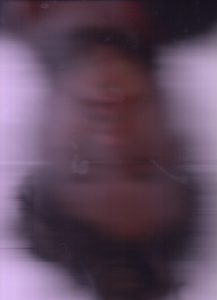 James Hazel
James Hazel
- What drew you to the two pieces of microlit you chose to compose for?
I was drawn to the resonant and musical qualities of both texts. The ways in which they encapsulate personal recollections of experience unfolding in time, within small and poignant formats.
- What was the key element of the microlit that you were you trying to capture or express in your compositions? Maybe a feeling, a memory, a sense of place? Or something else entirely?
Pertinent elements that I was attempting to capture included: the unique forms of introspection of each narrator, and the rhythmic pacing and cadences of the words, as well as the atmosphere generated by the writer’s aesthetics. In ‘It Stretched our Shape’ by Tess Ridgway, I wanted to capture the mystery, excitement, and sense of communion encountered in electronic musical festivals, as well the transcendental qualities of dancing with large groups of people in rhythmic unison. In ‘When B Moved In’ by Paulette Smythe, I wanted to capture the elusiveness of the figure next door and the emergent sense of intimacy the narrator shares with a stranger separated by a wall.
- What was it like to use a stranger’s writing as the inspiration for your composition? Did it make you think differently about your own creative practise, or allow you to appreciate new layers of meaning in the story?
Working with another person’s text is always an unexpected and exploratory process, particularly when dealing with two different writing styles and themes. Composing for text in this way is, ultimately, an exercise in artistic resignation, permitting sonic space and structural pacing; allowing the explicit and subtle qualities of the text to emerge for the listener, whilst attempting to frame the writing in emotive and considered ways.
- What was the hardest part of creating the composition? What was the best?
The challenging aspects were allowing the writing the space to breathe and thrive, and to retain fidelity to the narrative themes, without overwhelming the words with excessively composed sounds.
- What role do you think sound plays in storytelling?
Sound can sometimes add weight and depth to text; it can offer multiple and unexpected nodes of interpretation; it can reinforce or subvert the aesthetic; and it can present us with a vessel with which to receive the themes of the writing beyond syntax, structure and, sometimes, even the obvious elements of language.
- If you had to describe each of your compositions in three words or less, what would you say?
Evocative, introspective, and musical.
James Hazel is an emerging Australian composer & sound installation artist residing in Sydney, Australia. His work has been exhibited/performed throughout Australia. Drawing from sound, installation & text based practices, Hazel’s cross-disciplinary body of work investigates the role of ritual, as an aesthetic, non-fixed temporal process, and the ways in which this can intersect with social, political and ritual spaces.
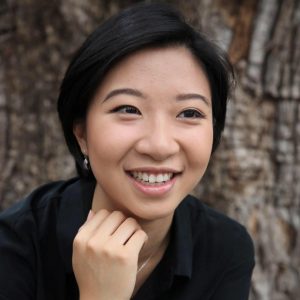 Victoria Pham
Victoria Pham
1. What drew you to the two pieces of microlit you chose to compose for?
Interestingly, I was drawn to ‘Menieres’ written by Anna Spargo-Ryan by the colour of the word itself. It appeared deep blue and a sort of emerald green. Once I gradually read through the text, I was drawn to the nostalgic shaping of her phrases and the rhythm of her words. As for ‘Rain in the Northern Rivers’ by Moya Costello, it was the polyphonic textures of rain, storms, water, especially the movement of the words itself that felt immediately rhythmic and musical.
2.What was the key element of the microlit that you were you trying to capture or express in your compositions? Maybe a feeling, a memory, a sense of place? Or something else entirely?
A sensation was necessary in both works as the interesting part about working on the two compositions was that they don’t just provide musical accompaniment for the text, but a soundscape. In particular, ‘Rain in the Northern Rivers’ unfolded for me to capture a sense of space. Particularly poignant was the final phrase, “like protection, sympathy, shelter.” The notion of memory and recollections of musical experiences in the past in ‘Menieres’ brought me back to my own childhood musical moments. In fact, it gave me a chance to revisit some of my past music which is interwoven throughout the soundscape. Memory expressed through the movement of sound was key.
3. What was it like to use a stranger’s writing as the inspiration for your composition? Did it make you think differently about your own creative practise, or allow you to appreciate new layers of meaning in the story?
In fact, I often find text that is not from myself easier to reflect upon and more inspiring. It forces me to look through a different lens, if you will, in order to create a work. Automatically, it is a process that is collaborative that allows me to feel and unpack several experiences of a place, space, memory or sound.
4. What was the hardest part of creating the composition? What was the best?
The most difficult section of the process was ensuring that the soundscape I was creating never overcame the text, but rather was an accompaniment. The text is the most important part of the work as a whole and making sure that you give it space to breathe (literally in some instances) and pace out your selection of sounds. The best part was being able to read through all of the finalists’ microlit fiction and having the time to get to know the text from several angles; the first encounter on paper, how the work breathes when narrated and then how to think about it musically and sonically.
5. What role do you think sound plays in storytelling?
Sound is essential to storytelling. When you think about it, oral recitation was one of the earliest forms of storytelling in which sound is a key factor. Beyond text, it is a sense of tactility, the olfactory and the auditory that play a major sensory role in our experiences, our capacity to remember and our ability to express.
6. If you had to describe each of your compositions in three words or less, what would you say?
‘Menieres’: melancholy, eerie, profound. ‘Rain in the Northern Rivers’: distant yet familiar.
Victoria Pham is an Australian composer, archaeologist and artist currently based in Paris, France. She holds a Bachelor of Music Studies (Composition) at the Sydney Conservatorium of Music, studying under the tutelage of Carl Vine AO, Gerard Brophy and Sandy Evans and Bachelor of Arts (Archaeology/Art History) at the University of Sydney.
She has been commissioned by a number of institutions such as the Art Gallery of New South Wales, The Brett Whiteley Studio, Out of the Shadows Festival, Spineless Wonders and Maitland Regional Art Gallery, and worked with a number of ensembles such as VOX, Sydney Conservatorium Wind Symphony, and Josie and the Emeralds. As an artist, she has featured in several festivals from VIVID, Sydney Fringe to TINA/Crack X Theatre.
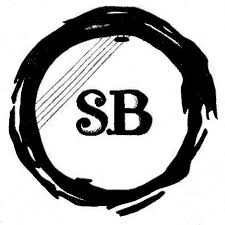 About Sonant Bodies
About Sonant Bodies
Sonant Bodies is an experimental sound-art collective co-directed by Victoria Pham and James Hazel. Their work explores new territories in the nexus between sound art and composition, ritual space, the memory of sound, and electro-acoustic performances.
In 2018, Sonant Bodies had their first self-titled solo exhibition at Maitland Regional Art Gallery. Sonant Bodies work has been featured and performed at Vivid Sydney (2016 & 2018), Back Stage Music Series curated by Liz Jigalin & Lamorna Nightingale, Sydney Fringe Festival, 107 Projects, & Erskineville Townhall, This is Not Art Festival, Cracked Theatre Festival, Maitland Regional Art Gallery & the Sydney Conservatorium of Music.
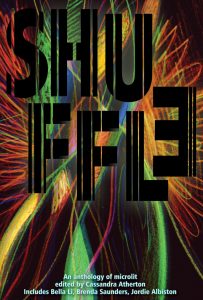
To purchase a copy of the sound-themed microlit anthology Shuffle, ask for it at your local bookstore or order on-line here.
To find out more about Spineless Wonders’ collaborations and installations, check out our #storybombing section on this website.

